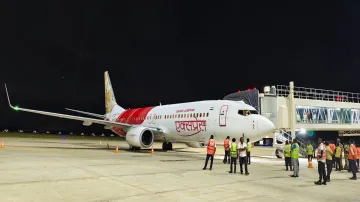A Sharjah-bound flight from Tamil Nadu's Tiruchirappalli experienced a mid-air technical glitch shortly after takeoff on Friday evening, according to police officials. With 141 passengers onboard, the flight took off from Trichy airport for Sharjah at 5.43 pm but soon developed a technical snag, they added. Preliminary reports indicate that the issue is related to the aircraft's hydraulic systems, a crucial component for controlling key operations, including landing. In the wake of the potential emergency, fire tenders, rescue teams, and ambulances were deployed to the airport to ensure the safety of passengers and crew. However, the flight made an emergency landing at the Tiruchirappalli Airport.
What is hydraulic failure in aircraft?
Hydraulic failure in an aircraft refers to the malfunction or loss of hydraulic systems, which are critical for controlling various components such as landing gear, brakes, flaps, and flight control surfaces. These systems use pressurised fluid to operate mechanisms that are essential for manoeuvring and safely landing the aircraft. Hydraulic failure in aircraft can have severe consequences, potentially leading to reduced control, heightened workload for pilots, and in extreme cases, catastrophic outcomes. Hydraulic systems play a crucial role in operating and controlling high-pressure fluid to power essential mechanical and electrical components, including flight controls, landing gear, and brakes.
In the event of hydraulic failure, pilots may face compromised control over the aircraft, significantly reducing its manoeuvrability. This loss of control not only increases the risk of accidents but also demands quick and precise responses from pilots to mitigate potential disasters. Modern aircraft are equipped with backup systems and emergency protocols, but hydraulic system malfunctions remain one of the more serious in-flight challenges, often requiring immediate attention and emergency landings to ensure passenger and crew safety.
Causes of hydraulic failure:
- Fluid leakage: A common cause, where hydraulic fluid leaks from the system, leading to a loss of pressure.
- Pump malfunction: Hydraulic pumps that generate the necessary pressure can fail.
- Contamination: Dirt or debris in the hydraulic fluid can clog the system.
- Mechanical damage: Damage to hoses, seals, or valves can disrupt the system.
ALSO READ: Air India Express flight suffers hydraulic failure in Tiruchirappalli, announces mid-air emergency
Latest India News
